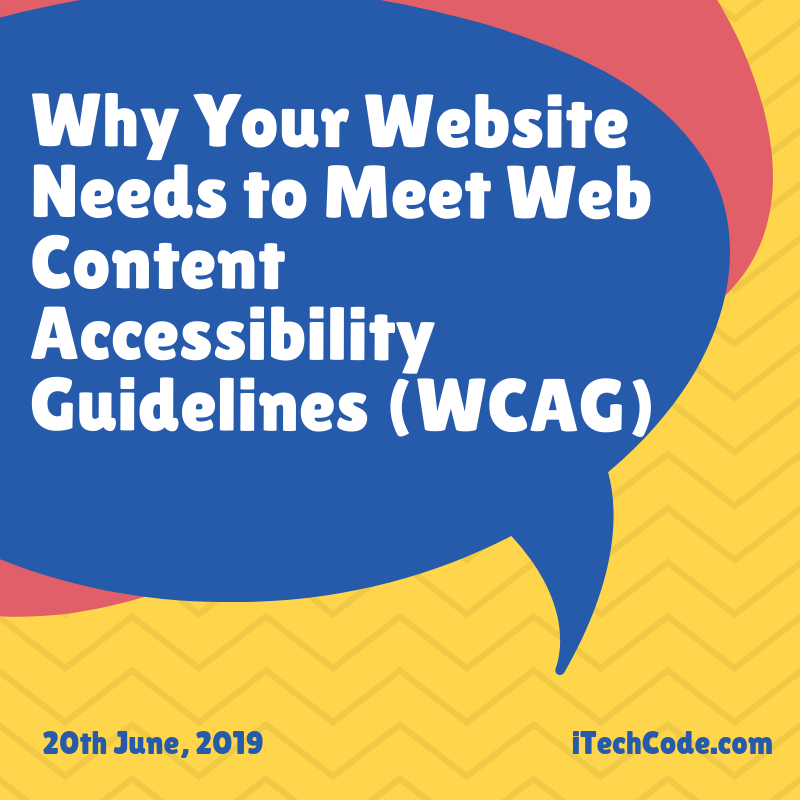Passed in 1990 the Americans with Disabilities Act (ADA) made it a legal requirement to provide reasonable adaptations for people with disabilities. It is a bit baffling how recent the advent of accessibility tools such as larger bathroom stalls, designated handicapped parking spots, and wheelchair ramps are.
Back in 1990, we could not possibly predict what the Internet would evolve into. The Internet is replacing brick and mortar stores and connecting us with the entire world; this is a feat that was previously only fathomable to see in a Sci-Fi movie.
This technological shift means it is integral for websites to be accessible to everyone. Below is why, if you don’t make a change, your website could suffer.
What is Internet Accessibility?
Visual, hearing, cognitive, sensory, and motor impairments can stop individuals from enjoying the full range of entertainment and convenience the online world has to offer.
So, you may be asking yourself ‘what can I do to help and how do I do it?’
Web Content Accessibility Guidelines (WCAG) were released to help website owners convert their website into a platform accessible for all. Some examples of ways to make your site accessible are to:
- Add synchronized text captioning for all video and audio files so people who are deaf or hard of hearing can access the content.
- Have text and descriptions for links available in HTML so they are readable from a screen reader. Screen readers are a necessity for many who need to zoom in, edit text for legibility or utilize text to speech technology.
- Make navigation and text easy to see. For example, don’t use a light-colored, small font against a white background
The WAI (Web Accessibility Initiative) site, https://www.w3.org/WAI/WCAG21/quickref/, provides a quick reference for ways to adapt your site for people with different abilities.
How Being ADA Compliant Helps your Website
Recently, the number of lawsuits against websites for lacking accessible content has been on the rise. Even companies like Nike have come under fire for their lack of accommodations. Small businesses, healthcare, education, and government websites are the most likely to be targeted for an ADA compliance lawsuit.
There are many benefits for your website following ADA guidelines aside from protection against lawsuits. The following are advantages that come along with making your website accessible.
- Improves search engine optimization (SEO): Search engine algorithms favor websites that are accessible to the increasing number of people surfing the web from their phones and tablets. Having video transcripts, text in HTML for text to speech devices, and text alternatives for photos make your website more appealing for search engines.
- Increases your target audience: Nearly 19% of Americans are identified as having a disability. People with disabilities report using the Internet less than people without disabilities. This is a huge audience that is being neglected. If your website does not allow easy navigation for people with disabilities they will not hesitate to move on to competitors.
Where Do I Start?
It may seem like an overwhelming task to transition to ADA compliance. This link, https://medium.com/@krisrivenburgh/the-ada-checklist-website-compliance-guidelines-for-2019-in-plain-english-123c1d58fad9, provides a great, easy to understand breakdown of tasks. Their most important suggestion is not making this a project that gets tossed around from department to department and ultimately never gets done. It is easiest to do this as things appear. For example, anytime you see an image that needs an alternative text description go ahead and do it right there and then.
Today we use our phones and computers for just about everything, from banking to ordering virtually anything in just a click. People with disabilities should have the same access as everyone else to these conveniences.
Making your website accessible for people with disabilities not only shows you care but can protect you from lawsuits and improve the overall functionality of your site and can protect you from lawsuits.

You can also stay updated by subscribing to iTechCode.